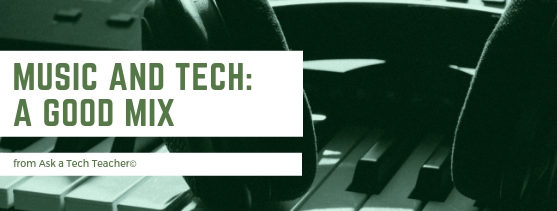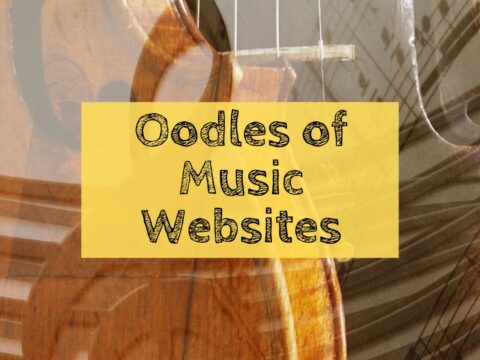Music is arguably one of the most important subjects taught in school, yet is often the first to be cut away when budgets fail. Thank you, Jane Sandwood, Ask a Tech Teacher contributor, for discussing some of the online options to make teaching music easier, more effective.
 In a recent survey, 93% of Americans said that learning music is an important part of getting a well-rounded education. It is a subject that can also benefit many other areas of learning, including math and languages, by engaging many different hemispheres of the brain. Using technology to improve and expand teaching methods can help students learn about music quicker and give them a variety of different learning techniques.
In a recent survey, 93% of Americans said that learning music is an important part of getting a well-rounded education. It is a subject that can also benefit many other areas of learning, including math and languages, by engaging many different hemispheres of the brain. Using technology to improve and expand teaching methods can help students learn about music quicker and give them a variety of different learning techniques.
Innovative Piano Apps
When you are teaching music, having a basic understanding of the layout of a piano keyboard can be extremely useful, especially when it comes to learning music theory. The piano is visually simple, making tones and semitones easily identifiable in a way that is difficult with other instruments, such as the trumpet and saxophone. By understanding the keyboard, you can also teach the concept of sharps and flats in a logical way. There are a number of innovative piano apps on the market that make this possible – you don’t have to have access to an actual piano. In a small classroom this is ideal and students can also learn at home on their tablets and smartphones. Simply Piano and Joy Tunes are two excellent piano apps that provide informative lessons and musical knowledge in a logical, step-by-step way.
Streaming live music
It is impossible to learn about music without listening to it. Using live streaming services in the classroom is an excellent way to expose students to a wide variety of styles and genres from baroque and classical, through to hip-hop, K-pop and dance. Live video streaming has meant that you can bring the largest concerts in the world straight into the classroom. Or you could watch an intimate performance of a jazz trio. One of the biggest benefits of this is to see professional musicians at their best and study the techniques that they are using. You can also use this as a basis for discussion about composition and how music has evolved over the centuries. What would Mozart think of the evolution of live streaming? It certainly would have brought the classical music of the time to the masses, rather than being something that was generally only heard by the aristocracy.
Electronic Tuners
Electronic, or Chromatic Digital Tuners, are an excellent tool to help with tuning instruments. They are particularly useful for delicate string instruments, such as violins and ‘cellos. They are also heavily used for guitars, where the accurate tuning of all six (and even 12) strings is extremely important. Using an electronic tuner can help music students understand the relationship between Megahertz and the notes that they are hearing. In a classroom situation, all students can benefit from using one, even for improving their singing techniques – unless you are singing in tune, the sound is not going to be pleasant to listen to.
Music teaching is benefitting enormously from the evolution of technology. It can be brought into the classroom and help to broaden students knowledge and instrumental skills.
–Jane Sandwood is a freelance writer, editor and former tutor, homeschooler, and mother of two teenage daughters.
More on music
3 Fresh Art and Music Apps for the Classroom
Learn How to Play a Musical Instrument on Your Smart Phone
New Statistics Linking Music Education to Cognitive Development
Jacqui Murray has been teaching K-18 technology for 30 years. She is the editor/author of over a hundred tech ed resources including a K-12 technology curriculum, K-8 keyboard curriculum, K-8 Digital Citizenship curriculum. She is an adjunct professor in tech ed, Master Teacher, webmaster for four blogs, an Amazon Vine Voice, CSTA presentation reviewer, freelance journalist on tech ed topics, contributor to NEA Today, and author of the tech thrillers, To Hunt a Sub and Twenty-four Days. You can find her resources at Structured Learning.




































